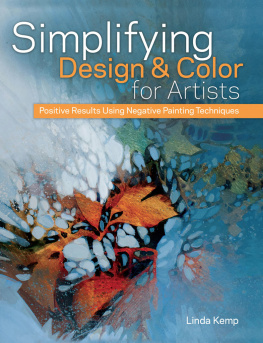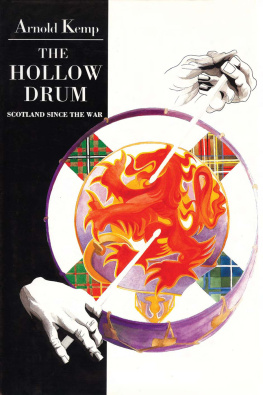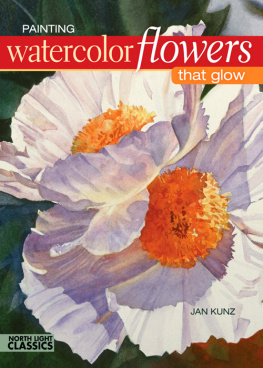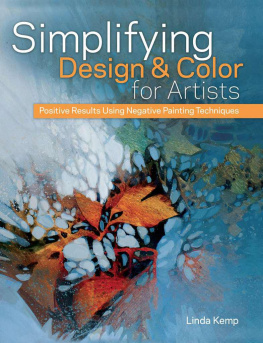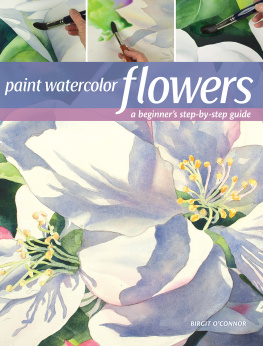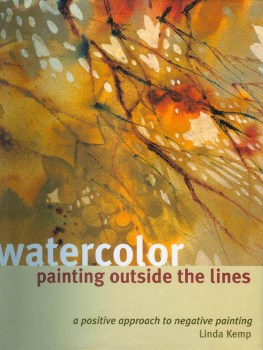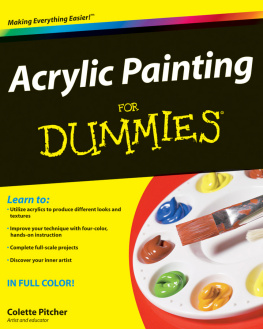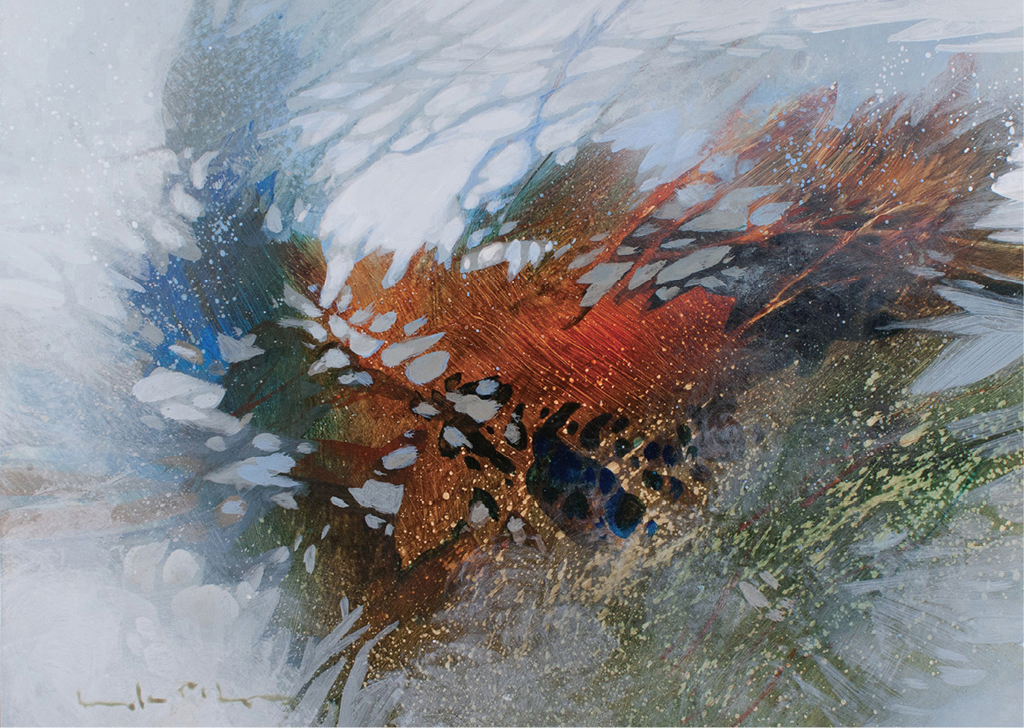Thank you for purchasing this Artist Network eBook.
Sign up for our newsletter and receive special offers, access to free content, and information on the latest new releases and must-have art resources! Plus, receive a coupon code to use on your first purchase from NorthLightShop.com for signing up.
or visit us online to sign up at
http://artistsnetwork.com/ebook-promo
Supplies You Need
Most of the supplies needed for these projects can be found in a basic painting kit. The projects are presented in either watercolor or acrylic but the concepts can be applied in any painting medium. Use your favorite products and equipment. Any specific colors, brushes, papers/canvas and extra tools needed to complete each exercise are listed at the beginning of each project; the following is a comprehensive list of the materials you will need.
Surface
- 140-lb. (300gsm) cold-press watercolor paper
- Optional watercolor paper: 90-lb. (190gsm)
cold-press; 140-lb. (300gsm) and 300-lb. (640gsm) hot-press - Ampersand Claybord
- Prepared canvas or canvas panel
- Gessoed paper (optional)
Paints
- Watercolors of choice
- Acrylic paints of choice (transparent and opaque)
Brushes
For watercolor:
- soft, flat wash brushes in 12-inch (12mm), 34-inch (19mm), 1-inch (25mm) and 1 12-inch (38mm) sizes
- nos. 8, 10, 12 and 14 round (my preference is synthetic)
For acrylic:
- 12-inch (12mm), 34-inch (19mm), 1-inch (25mm) bright
- no. 6 round
- soft fan brush
- 1-inch (25mm) hog bristle or natural bristle housepainting brush
Other supplies
- Smooth white gesso
- Glazing medium
- Black fine-point and broad-tip markers
- Water-soluble fabric marker (for very fine and easily removable lines)
- Watercolor pencils (optional)
- Graphite pencils
- Sketchbook and sketch paper
- Tracing paper
- Palette paper (neutral gray)
- Spray water bottles (fine-mist and large droplets)
- Rag or untextured paper towel
- Sponge
- Plexiglas or nonporous plastic board
- Wooden board for drying
- Ruler or T-square
- Reference photos and sketches or live resource material
- Photocopier or scanner and computer
- Hair dryer
Working small
While I thoroughly enjoy tackling a large canvas, the smaller sizes of the projects and finished works in this book were specifically selected to allow you to clearly see the brush marks, surface textures and techniques. Working on a small scale allows for lots of experimentation without investing a great deal of time or expense in materials. With the exception of the last few demonstrations, each project should take no longer than an hour or two.
Introduction
Unspoken Series #1
Acrylic on panel
11" 14" (28cm 36cm)
Making good paintings isnt about knowing all the answers. It is about delighting in exploring solutions to challenges and visual problems.
When we make a painting, we reveal a lot about ourselves. Beyond simply displaying skill level and technical abilities, the paintings we make give insight into our sensitivities, natural sense of design and color, mood, personality and our ever-evolving interests.
A painting is a visual narrative of the relationship between the subject and the artist. Some painters believe the subject is everything and that it is their job to portray its essence with accuracy. For others, the subject is insignificant in itself but serves as a symbol or device for revealing and expressing how the artist thinks and feels. The subject is pliable and is molded to suit artistic intent.
I am continually inspired by the intricacies of interwoven forms and the tangled layers of patterns I discover when I hike through woodlands and countryside. It is my curiosity and desire to decipher, understand and organize the shapes and colors that motivates me to paint. In an attempt to unravel natures elusive mysteries and understand how it all fits together, my strategy relies on two things: simplifying the complicated and taking an alternative negative (subtractive) approach to build my imagery.
I confess that I am obsessed with negative paintingcreating an object by painting the space around it, rather than the more usual practice of filling it in with color. While it is a simple concept, to make a successful painting there are many decisions to be made beyond choosing whether to put paint inside or outside of a shape.
Challenging the way we approach subject matter
We typically describe our subject matter as landscapes, figures, portraits of people and animals, florals or still life. Further defined, favorite themes might be described as light patterns and shadows on trees, children playing at the beach, a bouquet of roses, or trinkets on an old dresser. It is frequently with these types of subject-specific descriptions in mind that instructional books and workshops teach us how to paint. While most instruction also presents direction for color and design, this information is secondary to the objective of depicting things.
It is perfectly acceptable to want to paint these subjects, but as you work to improve your art, I suggest working with a different purpose. Concentrate specifically on exploring color and design concepts as the objective or subject of the painting. You can still paint your favorite subjects, but they are no longer the point of issue of the painting. Think of it this way: when you paint, you hang essential concepts of color and design on shapes and symbols, just as a clothing shop displays the latest colors and fashions on mannequins.
Use the shapes you find in this book or choose anything that interests you for your paintings. The examples you see in this book may feature daisies, leaf patterns and lace along with an assortment of other objects from nature to merely serve as opportunities to explore the real objectives of the projects:
- To provide tactics to help you simplify color and design concepts
- To build your knowledge and confidence so that you can think your way through the problems of future paintings
- To teach you strategies for working in the negative
In this way, rather than the portrayal of things, the objective of each project becomes breaking down design and color into practical, easy-to-use concepts.
When your goal is to become a better designer and colorist, you will become a better painter regardless of what objects you depict or style you choose to work in.
Whether you paint in a highly realistic, abstract or modernist manner, the concepts of simplifying can be readily applied. The style of painting demonstrated in this book is contemporary and semi-abstracted with a stylized treatment of form, color and design.

